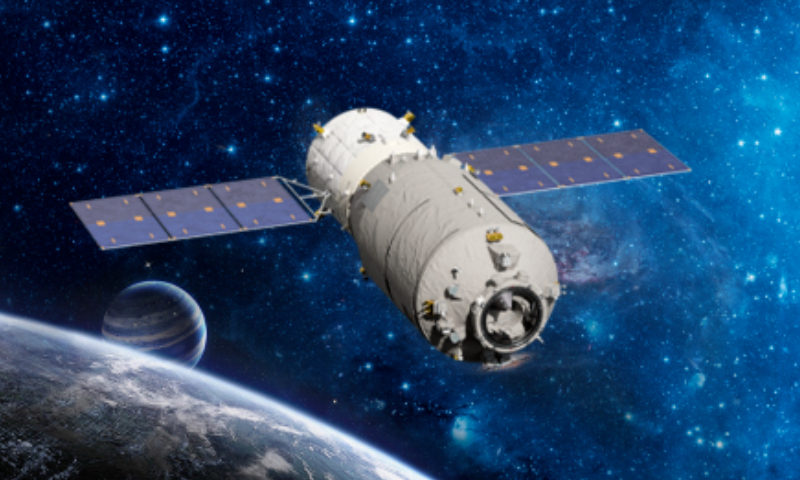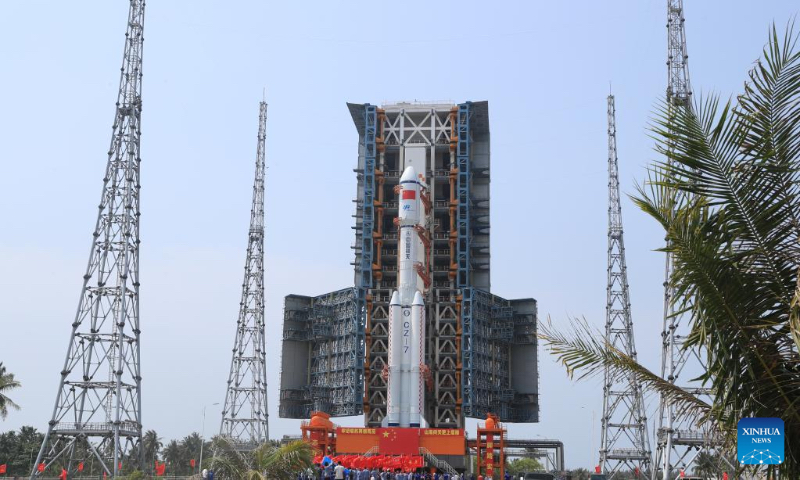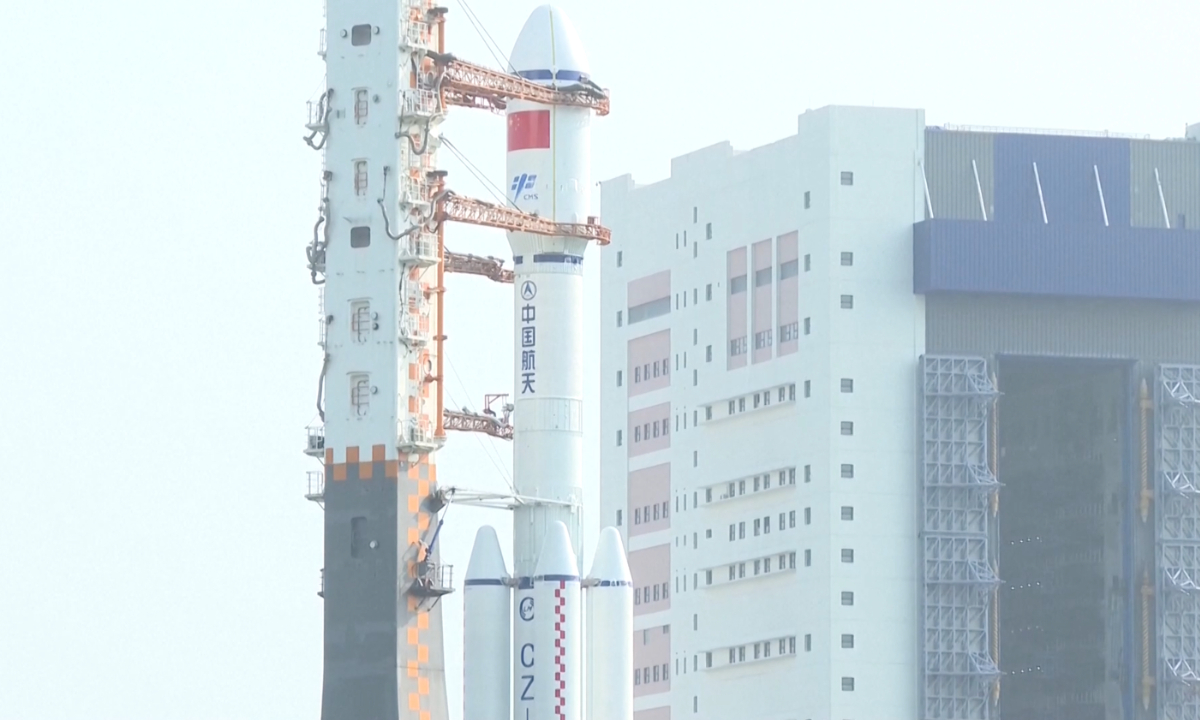China’s reusable spacecraft returned to earh
China's reusable experimental spacecraft successfully lands after 276 days in orbit
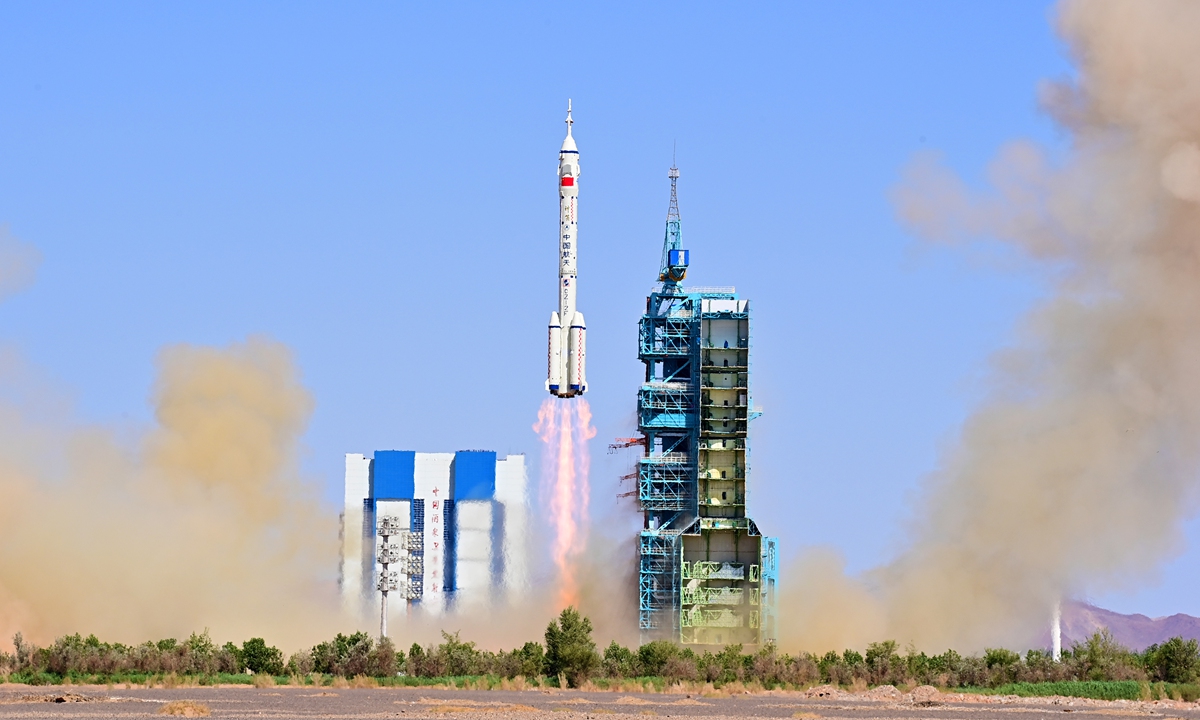
Sitting atop the Long March-2F Y14 carrier rocket and carrying three taikonauts, China's Shenzhou-14 spaceship is launched successfully from the Jiuquan Satellite Launch Center in Northwest China's Gansu Province on June 5, 2022. Photo: VCG
After 276 days in orbit, China's reusable experimental spacecraft landed at its planned site at the Jiuquan Satellite Launch Center in Northwest China's Gansu Province on Monday, and Chinese space watchers said it was a milestone in China's efforts to develop a fully reusable space transportation system.
The success is an important breakthrough in China's research on reusable spacecraft technologies, which will provide more convenient and affordable round trips for the peaceful use of space, the Xinhua News Agency said on Monday.
China launched a reusable experimental spacecraft using its Long March-2F carrier rocket from the Jiuquan Satellite Launch Center on August 5, 2022, to test reusable technologies and in-orbit service technologies to support the peaceful use of space, Xinhua previously reported.
China tested the reusable experimental spacecraft in September 2020, and the spacecraft returned to the planned landing site after two days in orbit. The spacecraft was also launched with a Long March-2F carrier rocket.
Chinese authorities have disclosed few details about the craft's technology. So far, no images of the spacecraft or footage of its launch or landing have been disclosed.
Many space lovers compared it to the US Air Force's X-37B, an autonomous Boeing space plane that can remain in orbit for long periods before returning to Earth on its own, saying that the technology used in the experiment is "too advanced to show" on social media.
The reusable spacecraft's technology has evidently matured, considering how much longer it can stay in orbit, Chinese space watchers noted on Sunday.
Song Zhongping, a space expert and TV commentator, told the Global Times on Monday that the reusability of such spacecraft would drastically reduce costs. More importantly, the longer orbiting time means that the spacecraft can perform more complicated missions such as changing trajectory in near-Earth orbit and sending various payloads into orbit.
Judging from the rocket used in the launch, the Long March-2F carrier rocket - which is one of China's most advanced and reliable rockets for manned space flights - the reusable spacecraft may be used in future manned missions, said another space observer, speaking on condition of anonymity.
Given the payload launching capability of the Long March-2F, the spacecraft could weigh around 8 tons, which is very similar to the launch mass for the X-37B at around 5 tons, so that speculation about their similarity is not groundless, the observer said.
China’s secret spacecraft returns to Earth after 9-month mission
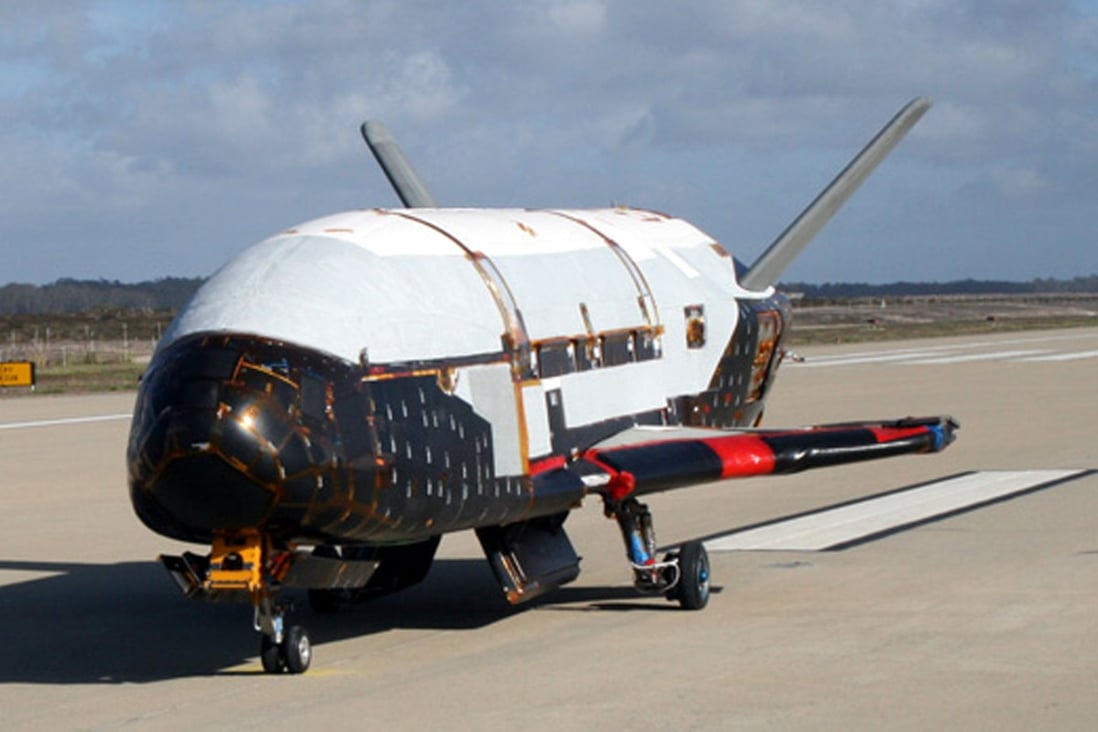
Experts believe the Chinese reusable unmanned spacecraft is likely to be similar in size and design to the US Air Force’s X-37B, pictured at a California military base. Photo: AP
Chinese space authorities said a reusable uncrewed space vehicle returned to Earth on Monday morning after 276 days in orbit – more than 100 times longer than its maiden flight less than three years ago.
China Aerospace Science and Technology Corporation, the nation’s biggest space defence contractor, hailed the classified mission as a “complete success”, saying it “marks an important breakthrough” in China’s research into the technology.
Reusable spacecraft “will provide a more convenient and cost-effective way for peaceful use of space”, the company said.
China scientists carry out ‘rule-breaking’ AI experiment in space
Researchers from Wuhan University say they gave the technology full control of a satellite and set it free for 24 hours
The artificial intelligence machine picked a few places and ordered the small near-Earth orbiter to take a closer look
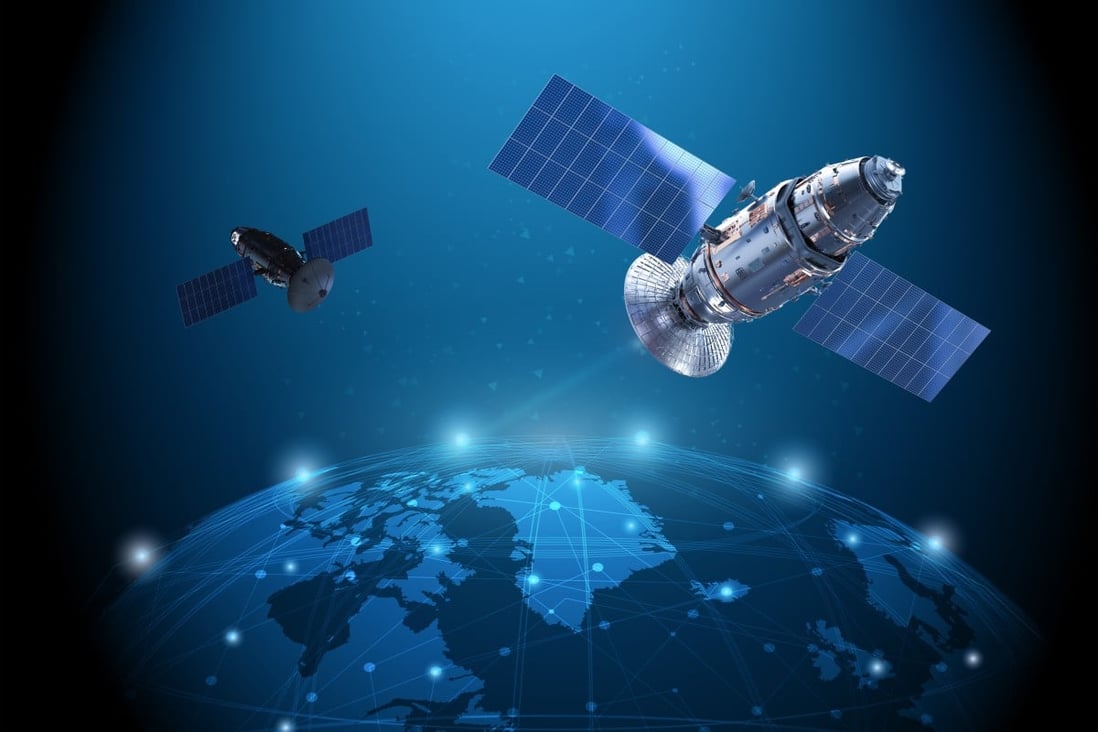
A small Chinese satellite was directed by artificial intelligence to observe sites in India and Japan, according to a research paper. Photo: Shutterstock
Chinese researchers say an artificial intelligence machine was given temporary full control of a satellite in near-Earth orbit, in a landmark experiment to test the technology’s behaviour in space.
For 24 hours the Qimingxing 1, a small Earth observation satellite, was directed by a ground-based AI, without any human order, assignment or intervention, according to a paper published in the journal Geomatics and Information Science of Wuhan University.
The research team, led by Wang Mi from the university’s State Key Laboratory of Information Engineering in Surveying, Mapping and Remote Sensing, said the aim of the experiment was to see what the AI would do of its own accord.
‘Red scare’ in US causes multi-year flood of refugees with PhDs to China
- OECD
data shows China sustains net gain of scientists while US suffers net
loss as ethnic Chinese researchers fear US government surveillance and
prosecution
The United States may want to choke off vital supplies of hi-tech gear, especially advanced semiconductors, to China. But, thanks to a “red scare” about industrial espionage and intellectual property theft that has specifically targeted ethnic Chinese researchers, it is inadvertently repatriating scientific talent to the mainland on a massive scale.
It’s an influx of refugees all right, but with PhDs and other advanced degrees, and many even with tenures back in the US. Forget Beijing’s Thousand Talents Plan or Overseas High-Level Talent Recruitment Programmes. The US government is recruiting for China by creating a climate of fear among an ethnic group of researchers through selective prosecution, while casting hundreds under suspicion and killing the careers of many.
In a new analysis of Organisation for Economic Cooperation and Development (OECD) data, the conservative Cato Institute found that in 2021, the US lost published research scientists to other countries, while China gained more than 2,408.
“This was a remarkable turnaround from as recently as 2017 when the United States picked up 4,292 scientists and China picked up just 116,” it said. “The rest of the OECD and China have both surpassed the United States for net inflow of scientific authors.”
Why China’s tech sector is still a draw for graduates looking to a coding future
30 Apr 2023
The institute concludes: “This is a disturbing trend … started before the pandemic. In fact, it appears to coincide with the Trump administration’s ‘China Initiative’ – more accurately titled the anti‐Chinese initiative.
“Launched in November 2018, the Department of Justice’s campaign was supposed to combat the overblown threat of intellectual property theft and espionage. In reality, it involved repeatedly intimidating institutions that employed scientists of Chinese heritage and attempting malicious failed prosecutions of scientists who worked with institutions in China.”
While the FBI and Justice Department have supposedly ended its “China initiative”, the US National Institutes of Health (NIH), the country’s single largest funding source of academic biomedical research, has been boasting about its high kill rates.
According to a March report in the prestigious peer-reviewed journal Science, in the past four years, the NIH asked about 100 US institutions it funded to carry out internal investigations into academic staff. Some 81 per cent of the scientists targeted identified themselves as Asian, and 91 per cent of the collaborations under investigations were linked to China.
Science reports that 103 of those scientists, or 42 per cent of the 246 targeted – most of them tenured faculty members – ended up losing their jobs.
China urged to boost self-reliance in weapons tech to beat Western sanctions
11 Apr 2023
Even today, top NIH management is proud of the work, having cited the high number of “successful” cases resulting in job termination. But, according to Science, some administrators might find it easier to sack an employee than fighting the powerful NIH.
“Others, including some of the scientists targeted and the university administrators involved in investigating them, say the tremendous power differential between NIH and its grantees may be a better explanation for why so many scientists have been axed,” the Science article said.
“NIH is by far the largest funder of academic biomedical research in the United States, and some medical centres receive hundreds of millions of dollars annually from the agency. So when senior administrators heard [Michael Lauer, head of NIH’s extramural research] say a targeted scientist ‘was not welcome in the NIH ecosystem’, they understood immediately what he meant – and that he was expecting action.”
Separately, a late 2021 survey by MIT Technology Review identified at least 77 criminal cases and more than 150 defendants, out of hundreds of investigations linked to the China Initiative targeting research institutes.
“The initiative was supposed to focus on economic espionage, but it has increasingly charged academics with ‘research integrity’ issues,” it said.
Team behind extreme animal gene experiment eyes human nuclear resistance
29 Mar 2023
According to another survey by researchers at the University of Arizona, more than one in two scientists of Chinese descent feel considerable fear, anxiety, or both, about being surveilled by the US government, compared to 12 per cent of non-Chinese scientists.
The climate of fear noted by the Cato Institute study is hardly surprising. It warns: “If Chinese scientists are afraid to work in the United States, that means that the United States will not benefit from their discoveries as much or as quickly as China will.
“Although the Justice Department claims to have shut down its ‘China Initiative’, my colleagues doubt that Chinese scientists will be free from unjust scrutiny going forward.”
Beijing must love the irony. “Keep them coming, please,” it must be thinking.
Related posts:
Lift-off in space plane race as China tests hypersonic drone model

China space economy developing rapidly, the most accurate atomic clock in the world

